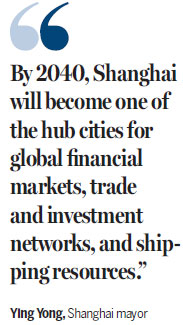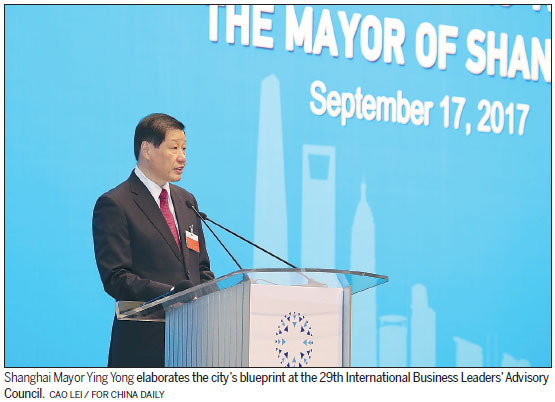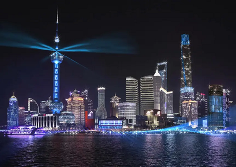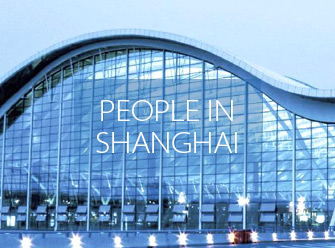Mapping out the way forth
The city's development plans for the coming decades have been laid out, with service capabilities, innovation and talent acquisition identified as the key aspects to securing further progress.
Shanghai Mayor Ying Yong on Sept 17 highlighted the blueprint for the city's development in the coming two decades, marking the importance of enhancing the city's attractiveness, creativity and competitiveness.
During his keynote speech at the 29th International Business Leaders' Advisory Council (IBLAC), Ying said Shanghai already possesses the foundation required to become a global city of excellence and that it is now pursuing its 2040 goal in accordance with the State strategy.

The annual meeting is held in Shanghai to gather advice from the executives of top multinational corporations that could help with the city's development. IBLAC was founded in 1989 by the then Shanghai mayor Zhu Rongji.
The theme of each year's event is closely connected to the city's current development focus. Over the past three decades, the think tank has expanded from 12 members from eight countries to the current 38 members and 7 honorary members from 16 countries. This year's event was themed "Towards a Global City of Excellence".
According to Ying, the city's comprehensive service capabilities form the foundation necessary to becoming a global hub for finance, shipping and trade.
"By 2040, Shanghai will become one of the hub cities for global financial markets, trade and investment networks, and shipping resources. Infrastructure will be further upgraded to strengthen the city's service capability, and the urban rail network will be extended to 1,000 kilometers," he said.
Mark Tucker, group chairman designate with HSBC Holdings Plc, suggested that Shanghai could be a center for expertise in developing sustainable infrastructure, a smart city and digital technology.
Ying pointed out that innovation is the key component to becoming a global city and that this is in line with Shanghai's ambition to become a technological innovation center with global influence. In order to achieve this, the city is looking to attract more R&D institutions and high-tech enterprises to build a world-class science zone in Zhangjiang of Pudong New Area.
The mayor also said that the added value of strategic innovative industries in the city is expected to increase to 25 percent of the city's GDP.
"When you look at the current situation, one of the biggest challenges identified by CEOs is the difficulty in getting talentand right now there is a concern that there isn't enough talent around," said Robert E. Moritz, global chairman of PwC.
Moritz also noted that while more opportunities need to be created in order to attract greater numbers of talent, locals holding leadership positions should also have a global perspective.
"Many organizations have recently shifted the focus from hiring expats to locals," said Moritz. "They would like to see that continue because it's better to serve the local market place with local leadership teams. We now need to make sure that local leaders have a global perspective so they can have a good understanding of local and global environments."
Rob Speyer, president and CEO of Tishman Speyer, added that the most competitive cities in the future will be the most livable cities as these are the places that will attract the world's top talent and capital.
According to Ying, Shanghai will proactively support the Belt and Road Initiative and cooperate with the cities and markets involved in the initiative in the fields of trade, financial services, infrastructure construction and cultural communication.
Vincent H.S. Lo, chairman of Shui On Group, suggested that Shanghai should establish a comprehensive platform to conduct overseas research, advisory services and liaison, as well as promotion of trade and investment so as to serve the Belt and Road Initiative and the Yangtze River Delta region economic belt strategy.
During his speech, Ying also touched on the measures that a rapidly developing city like Shanghai could take to not lose sight of its rich history. He said that there will be a concerted effort to preserve about 7.3 million square meters of the city's residential buildings in the downtown areas.
Sustainability is another important element in Shanghai's development, said Ying. Starting in 2040, all new buildings in Shanghai will be built in accordance with green building standards and green transportation will account for 85 percent of all transportation solutions in the city.
wang_ying@chinadaily.com.cn

 Contact Us
Contact Us

 Brilliant light show to illuminate Huangpu River
Brilliant light show to illuminate Huangpu River Maple leaves paint splendid scenery in Pudong
Maple leaves paint splendid scenery in Pudong Appreciate alluring lotus blossoms in Pudong's Century Park
Appreciate alluring lotus blossoms in Pudong's Century Park New pedestrian street boosts Pudong's night economy
New pedestrian street boosts Pudong's night economy 


